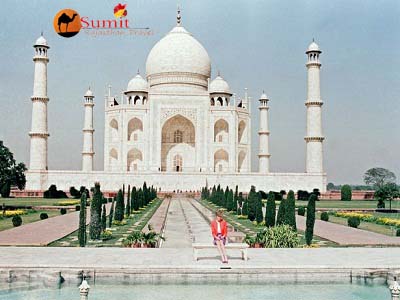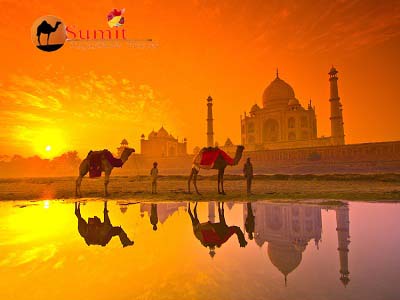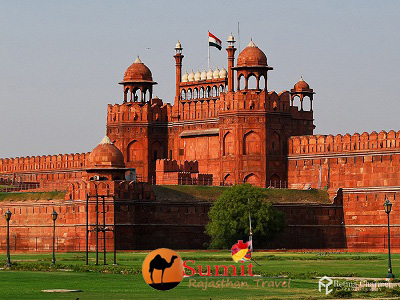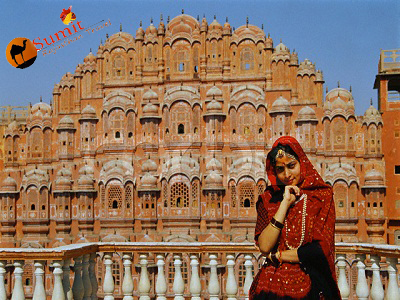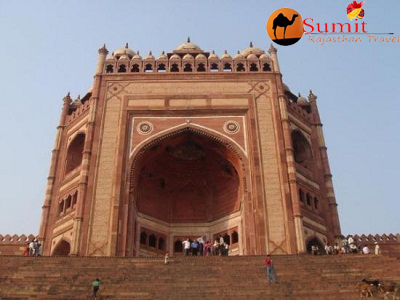Day 1: Delhi-- Arrival at Delhi Airport; pick up and transfer to the hotel; sightseeing in Old Delhi(Red Fort, Jama Masjid, Chandni Chowk, Rajghat) and New Delhi(Humayun's Tomb: Bahai Temple, Qutub Minar: Gandhi Smiriti: India Gate ,Rashtrapati Bhavan); overnight in Delhi.
Red Fort- The Red Fort was the residence of the Mughal emperor for nearly 200 years, until 1857. It is located in the centre of Delhi and houses a number of museums
Jama Masjid - The Masjid-i Jahān-Numā, commonly known as the Jama Masjid of Delhi, is one of the largest mosques in India
Chandni Chowk- Chandni Chowk is one of the oldest and busiest markets in Old Delhi, India. Chandni Chowk is located close to Old Delhi Railway Station. The Red Fort monument is located within the market.
Rajghat-Raj Ghat is a memorial to Mahatma Gandhi. Originally it was the name of a historic ghat of Old Delhi on the banks of Yamuna river. Close to it, and east of Daryaganj was “Raj Ghat Gate” of the walled city, opening at Raj Ghat on Yamuna River.
Humayun's Tomb- Humayun's tomb is the tomb of the Mughal Emperor Humayun in Delhi, India. The tomb was commissioned by Humayun's son Akbar in 1569-70, and designed by Mirak Mirza Ghiyas, a Persian architect chosen by Bega Begum
Bahai Temple- The Lotus Temple, located in New Delhi, India, is a Bahá'í House of Worship completed in 1986. Notable for its flowerlike shape, it serves as the Mother Temple of the Indian subcontinent and has become a prominent attraction in the city.
Day 2: After breakfast drive to Agra; visiting baby Taj Mahal , Agra Fort, at sunset time visiting Taj Mahal; overnight in Agra
About Taj Mahal- The Taj Mahal is an ivory-white marble mausoleum on the south bank of the Yamuna river in the Indian city of Agra. It was commissioned in 1632 by the Mughal emperor, Shah Jahan, to house the tomb of his favorite wife, Mumtaz Mahal.
About Agra Fort- The Agra Fort is a unesco World Heritage site located in Agra, Uttar Pradesh, India. It is about 2.5 km northwest of its more famous sister monument, the Taj Mahal. The fort can be more accurately described as a walled city.
Agra sunset time- Have you watched the sunrise over the marble mausoleum of the Taj Mahal or explore the impressive walled exteriors and inner paradise of the Red Fort? This private city tour will show you the Taj Mahal from the Mehtab Bagh on the other side of the Yamuna River, looking inside the romantic temple to Mumtaz Mahal, wife of the Mughal emperor Shah Jahan. We will also visit the abandoned city of Fatehpur Sikri that is also known as Ghost Town.
Day 3: After breakfast drive to Jaipur; on the way visiting Fatehpur Sikri, Abhaneri and the monkey temple in Jaipur; overnight in Jaipur.
Day 4:After breakfast visiting Amber fort; afterward going for city tour in Jaipur (Palace of the Winds, Waterpalace, Citypalace, Jantar Mantar, Museum , pink city local market, ); overnight in Jaipur .
Sightseeing In Jaipur, India. The Pink City of
Jaipur is a charming place, which dazzles the eye of a tourist with
several architectural landmarks, stylish monuments, palaces,
museums, wide avenues and colorful bazaars. Though less than 300
years old, the city is already full of mysteries and legends. Jaipur
is surrounded by hill top forts such as Amber Fort, Jaigarh and
Nahargarh. Enjoy your wonderful discovery of the unparallel beauty
of Jaipur.
City Palace-Conceived and designed by Jai Singh, the City palace is
a fine blend of Rajasthani and Mughal architecture. One of the most
important architectural landmarks in Jaipur, this he palace complex
has numerous buildings, courtyards, impressive Gateways and temples.
The palace houses Sawai Jai Singh's seven-storey facade Chandra
Mahal ("moon palace"), solid marble Mubarak Mahal, the Diwan-e-Aam
and Diwan-e-Khas (the Hall of Private Audience). Chandra Mahal is
still the residence of the present royal family.
Hawa Mahal-Arguably Jaipur's most acclaimed landmark, the tapering
Hawa Mahal, or "Palace of Winds" was built in 1799 to enable the
ladies of the royal household to watch street processions while
remaining in a strict state of purdah. Its five-storey facade,
decked with no less than 593 finely screened windows and balconies,
makes the building seem far larger than it really is; in fact it is
little more than one room thick in most parts.
Though the primary source of its appeal is undoubtedly the fantastic
honeycomb pink and white face, visitors can go inside (enter from
the back) to see exactly where the women sat, and take a close look
at the detailed stonework
Amber Fort -
Perched on a hill some 11km from Jaipur, and nestling among the Aravalli Hills, is the historic fort-palace of Amber. Set in a picturesque background, the splendid Amber Fort (Jaigarh) was built in 1600 by Raja Man Singh, commander-in-chief of the Mughal army during Akbar's reign and certainly one the greatest general of medieval India. The fort also made the headlines after Independence when it was supposed to be the most likely hiding place of the Kuchwahas' famous lost treasure. As India entered into a new dawn after its independence from the British and as a result, the princely states have to submit to the Indian Union, there was fear among the rulers that their huge fortunes may be confiscated by the government. Though the Income tax sleuths scoured the fort with metal detectors but found nothing.
Day 5: Delhi After breakfast drive to Delhi and drop at the airport or a hotel?
